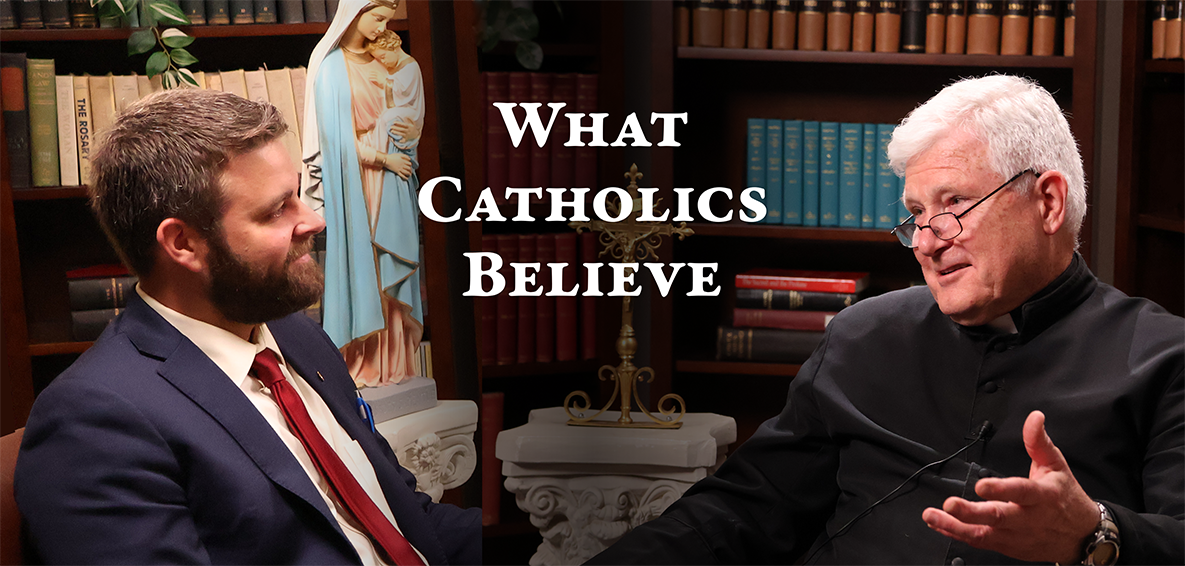Thoughts on the Rosary
The Rosary truly is Mary’s prayer. The Gospel tells us that the Blessed Mother kept and “pondered in her heart” the events of Our Lord’s life — which is exactly what we do when we pray the Rosary properly. And the recitation of the Angelic Salutation, the “Hail Mary” which announced the coming of the Redeemer, is as background music for our meditation on the words and actions of Jesus Christ. All Catholics joyfully fulfill the prophetic words of Our Lady in her hymn The Magnificat when she said: “Henceforth, all generations shall call me blessed!” We fulfill that prophecy in a uniquely powerful way when we attentively and devoutly pray the Rosary.
Pope Pius XI on the Holy Rosary
“From [the Rosary] the young will draw fresh energy with which to control the rebellious tendencies to evil and to preserve intact the stainless purity of the soul; also in it, the old will again find repose, relief and peace from their anxious cares. To those who devote themselves to Catholic Action, may it be a spur to impel them to a more fervent and active work of apostolate; and to all those who suffer in any way, especially the dying, may it bring comfort and increase the hope of eternal happiness.
The fathers and mothers of families particularly must give an example to their children, especially when, at sunset, they gather together after the day’s work, within the domestic walls, and recite the Holy Rosary on bended knees before the image of the Virgin, together fusing voice, faith and sentiment. This is a beautiful and salutary custom, from which certainly there cannot but be derived tranquility and abundance of heavenly gifts for the household. (From the Encyclical on the Rosary by Pope Pius XI, promulgated on September 29, 1937)
A Note about the Rosary
The prayer we call the “Hail Mary” is actually a compilation of elements (statements) in the New Testament. It begins with the words of the Angel Gabriel addressed to the Virgin Mary at the Annunciation: “Hail, full of grace, the Lord is with thee!” Thus, the opening words of the prayer correspond to the very first mystery of the Rosary itself: The First Joyful Mystery.
The next part of the Hail Mary comes from the statement of St. Elizabeth at the Visitation: “Blessed art thou amongst women, and blessed is the fruit of thy womb!” Thus, the second part of the Hail Mary corresponds to the Second Joyful Mystery, the Visitation.
The Third Joyful Mystery of the Rosary commemorates the Nativity of Our Lord and His receiving of the Holy Name — Jesus. And so this mystery provides the single-word completion of the first part of the Hail Mary with the Name: “Jesus.”
The rest of the Hail Mary has been added by the Church as an invocation beseeching Our Lady’s prayers “for us sinners.” But one might suppose that even that conclusion of the prayer stems from the Fourth Joyful Mystery. At the Presentation, Simeon prophesied to Mary that her Child “was destined for the rise and the fall of many in Israel,” and that He would be a “sign that would be contradicted.” He then told her that her “own soul a sword would pierce that the thoughts of many hearts might be revealed.” This prophesy looks ahead in time to the moment when the Blessed Mother stands at the foot of the Cross, united with her Son as He dies, pleading for the forgiveness of sinners.” It was then that the soldier acknowledged: “Truly this was the Son of God!” And so, mindful of this prophecy of Simeon at the Presentation, we add: “Holy Mary, Mother of God, pray for us sinners now and at the hour of our death. Amen.”
Thus, the beginning mysteries of the Rosary present to us in turn the very events which have formed for us the prayer we call the “Hail Mary.”

